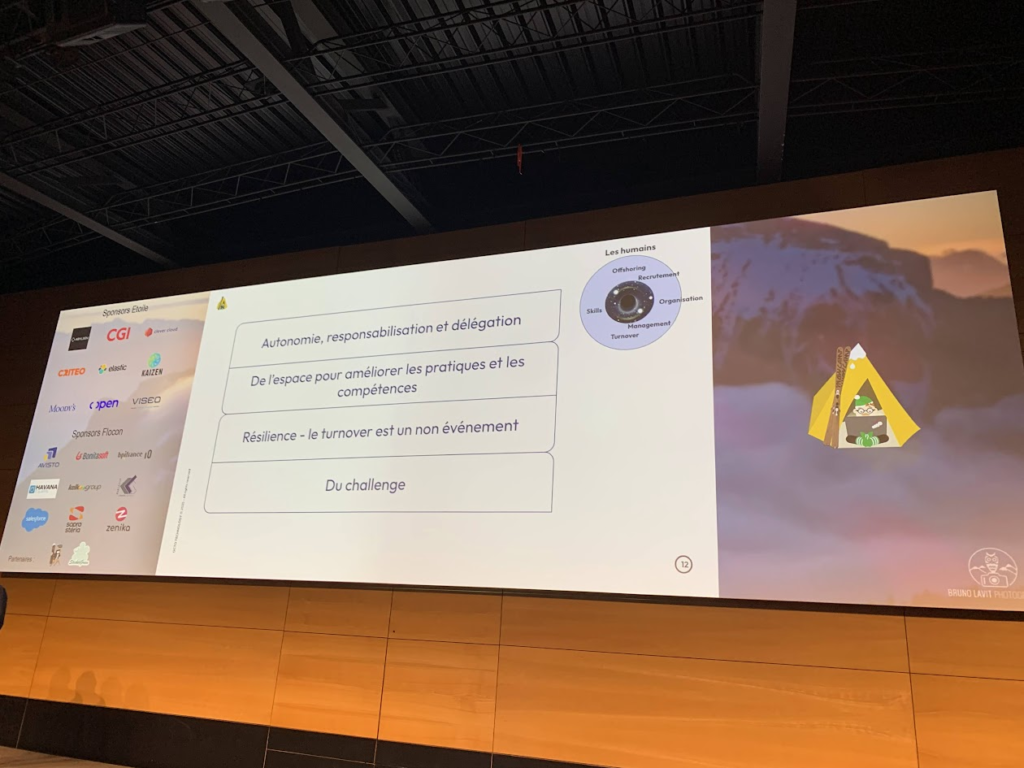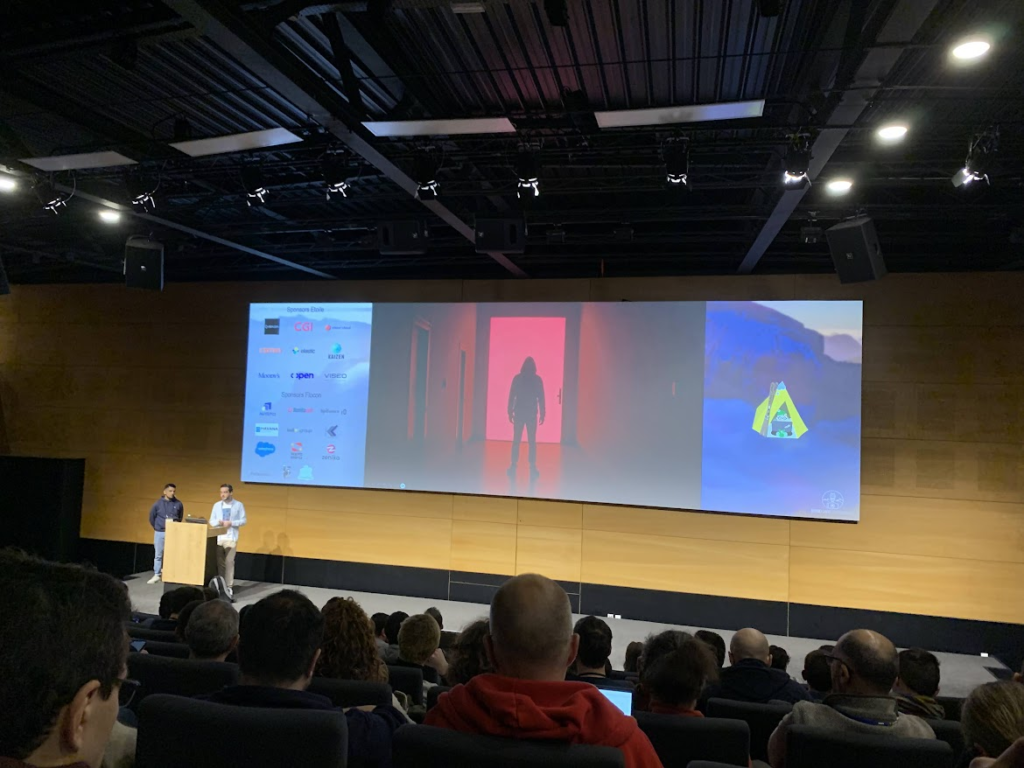Friday 9am
Keynote: Debug your salary! My winning strategies for successful salary negotiations, by Shirley Almosni Chiche (BUILD RH)
A very good conference, funny, energetic, full of jokes of all kinds to make people laugh about a stressful subject: salary negotiation. Shirley presents a number of strategies for setting out your expectations (know how much you want, how much leeway you’re giving yourself and, in general, don’t feel pressured to justify your request) and counter-arguments to the elements usually given to justify a low offer (the salary scale, equity in the team, ‘we don’t have the finances’, you’re not at the level we expect…).
The entire conference can be viewed here (presented at Devoxx):
Friday 10am
The Hive pattern: a modularisation strategy for your modular monolith or microservices. by Thomas Pierrain (Agicap) and Julien Topçu (Shodo)
A talk on why you need to break down a big thing into smaller things that are easier to refactor, deploy and grow. A solid and entertaining presentation, very well delivered.
The presentation is mainly aimed at consultants who need to structure ideas to convince a client to adopt a different system structure.
Take-away
No surprises for me, apart from the vocabulary. At SECUTIX we are well aware of the problems shown and have adopted a sort of Hive pattern without realising it, particularly in the Platform team. I’ve taken a few names from it to designate some of our practices (API, SPI, adapters, etc.).
I had to leave after that meeting and could not attend the talks of the afternoon.
Mixed notes
I found the attitude of the people attending the conference very pleasant and not showy. Thank you to those with whom I was able to discuss our practices, team structure, deployment or quality processes, etc. The atmosphere was really pleasant.
Three small notes in bulk:
Thanks to Nicolas D for his interesting thoughts on the evolution of the market of IT Service in France, and on the role of the architect: someone capable of going from the cellar of the application to the floors and understanding what’s going on, and capable of communicating with customers and users, of understanding the market.
Philippe Charrière, in addition to his thoughts on non-alcoholic gins, recommended that I see the interesting use of AI made by docker for technical support.
Yu Ling Cheng encouraged me to take an interest in the Playwright testing framework (to do what we do with our old Selenium). Thanks to her also for the very interesting discussions on UX components and their interface, and on the automatic testability of front-end code.
Finally, thanks to the organisers, the conference was a very pleasant experience, in good conditions. IT development is a very cool profession, and I’m happy to be able to practice it! It makes me want to propose a talk for next year


